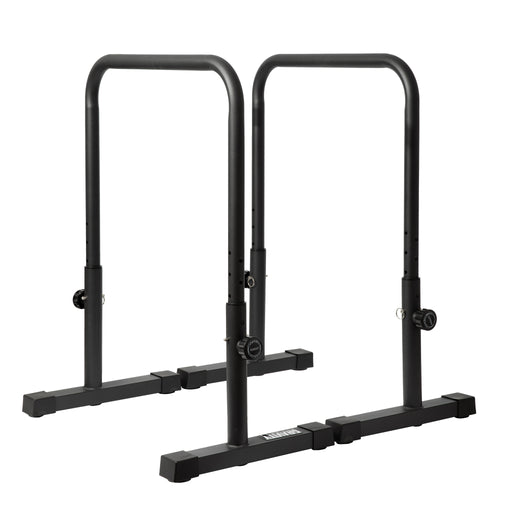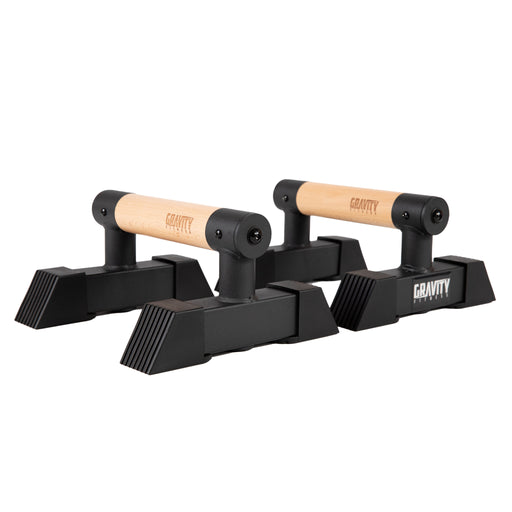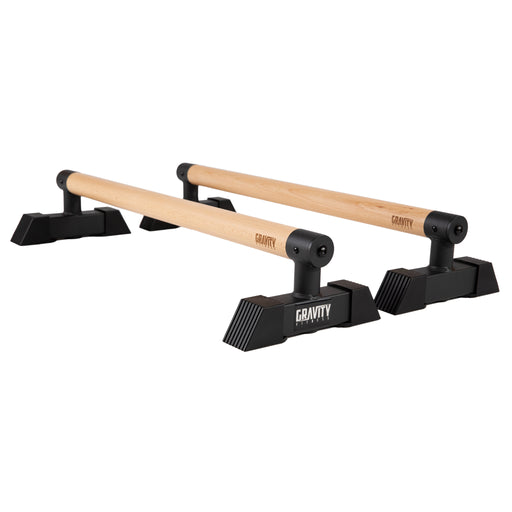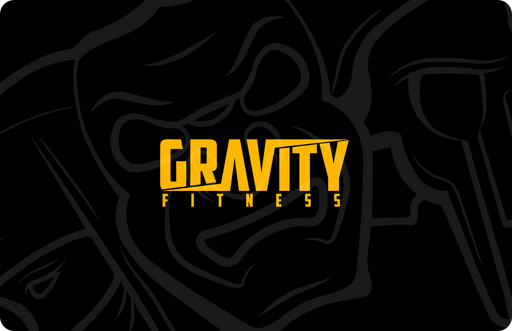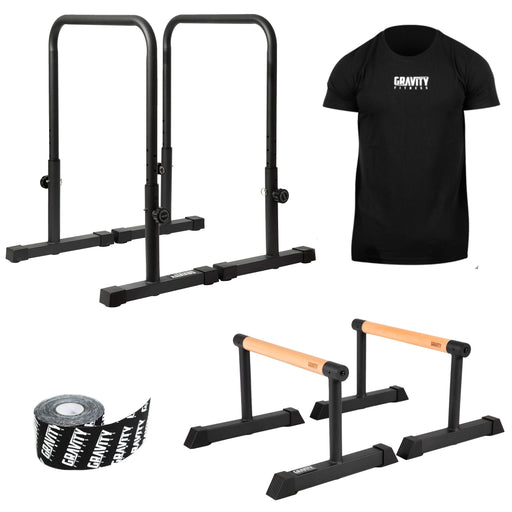
Parallettes: Wood or Steel?
A set of paralettes is a quintessential tool for calisthenics, or bodyweight training. Paralettes enable you to perform various push and pull movements, elevated movements and the ability to hone complex skills from your own home! Paralettes enable you to train anywhere at any time, whilst providing a full range of exercises and, in turn due to varying heights, varying ranges of motion.
But the question we are asking today is – which material should you go for paralette construction – wood or steel? I’m going to break down the uses for both paralette materials and the pros and cons for each.
Let’s start with wooden paralettes. Wooden paralettes tend to be lower to the ground. This means they are great for handstand practice, maltese planche drills or if you’re just getting started with calisthenics you can start training from a lower height to gain more confidence. The texture of the wood is also quite reassuring, especially if you train without gloves. The tactile nature of the wood acts as a firm base. Also, I’ve found when chalking up your hands, wood tends to have a better grip as a material. But this is more to do with personal preference. Wooden paralettes also tend to be great for carrying around in a workout bag, as they are lighter and shorter, they fit in most small bags. So, if you like to train outdoors, wooden paralettes would be a no brainer. As a material, wood tends to wear down differently to how steel would, so if you’re thinking you want to add a lot of weight in your training I would recommend the stability and durability of steel paralettes.
Now onto said steel paralettes. Steel paralettes come in two sizes, XL and normal. Instantly this means you have varying heights to work with. The normal size paralettes are more akin to the wooden paralettes, so they are the paralettes I will be comparing with the wooden ones. The Xl paralettes mean you can perform exercises, such as dips, front levers or knee raises, because your body has more room to manoeuvre. Steel is more durable, and stronger, meaning that if you want to add plenty of weight to your training, you can. And you don’t have to worry about any destabilization, particularly when practising complex skills. The extra height over the wooden paralettes also means you can get a larger range of motion. For example, performing a press up on steel paralettes, means you can lower yourself below the lowest point you would be able to on wooden paralettes. Due to the weight of steel paralettes, they tend to move around under strain a bit less too. The material can get a little bit slippery, under heavy sweat, so make sure you chalk both your hands and the paralettes plentifully, or you can strap them as you like for extra grip. However, the steel paralettes are heavier, larger and therefore not quite as portable.
In summary then, wooden paralettes are more natural and tend to be lower to the ground, enabling better practice for maltese planche, handstands and other skills. Their height also means that they can be very useful for beginners. Steel paralettes can have more weight put through them, meaning you can use them with a weighted vest or additional weight, and they come in varying heights allowing a greater range of motion, and elevation. Paralettes of any material are a great way to get into bodyweight and calisthenics training.
In the Gravity Fitness store you can pick up some paralettes at any size, so what are you waiting for? Get started training with paralettes and reap the rewards!













